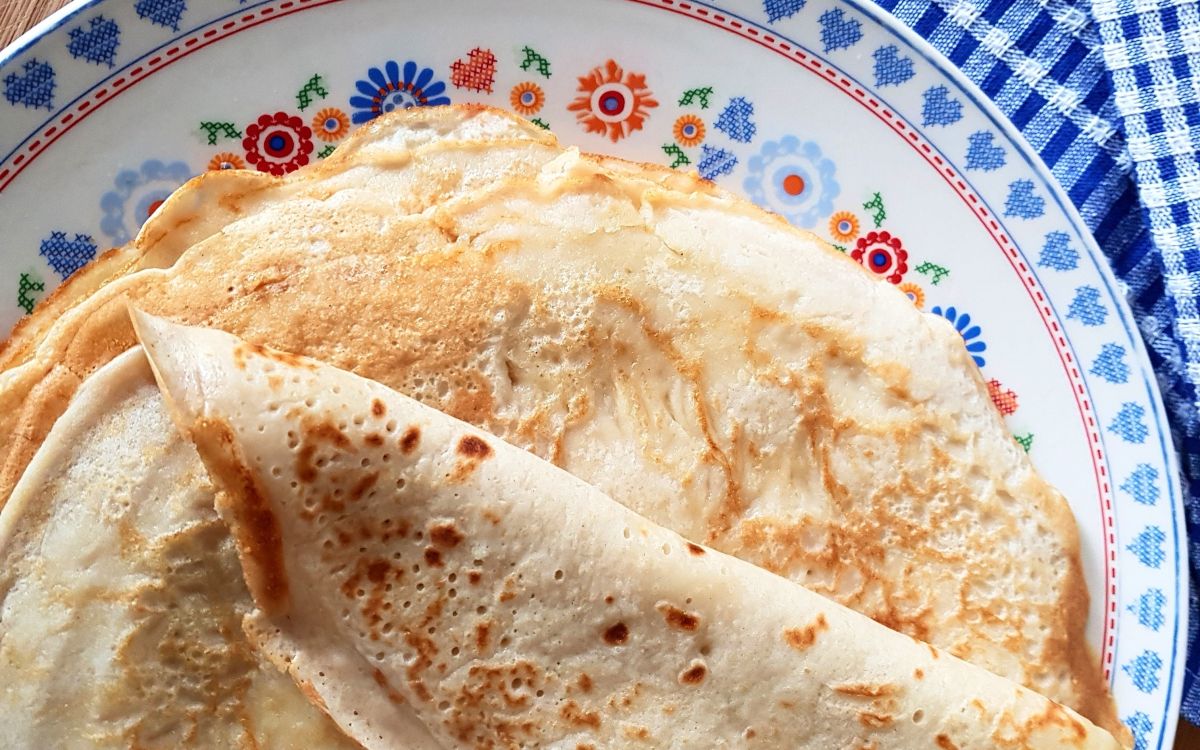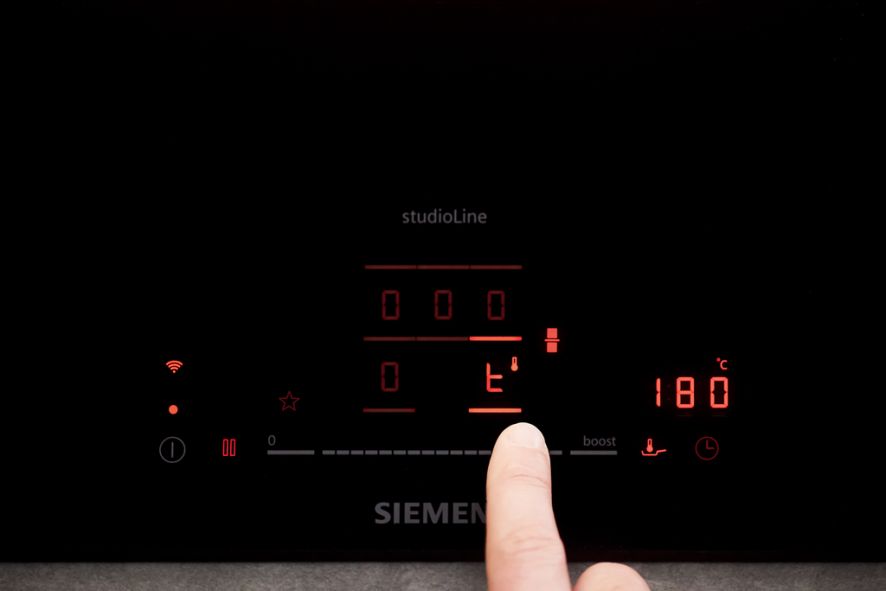A hob with temperature control makes all the difference

Too hot? Not hot enough? Too slow or too much? At last, the guessing game has an end! A hob with temperature control means you’ll always achieve the ideal heat for frying. This summary explains the difference made by the frying sensor feature and what the various temperatures are suitable for.
You’re sure to be familiar with the “pancake palaver”: The first attempt is futile, the next pancake is perfect, and the third one is suddenly overdone. So, you naturally reduce the temperature and the next one comes out great, but the fifth takes an eternity. And when adjusting the temperature once more, the adventure begins again.
Let’s say goodbye to the guessing game
The reason for the ups and downs at the stove is that conventional hobs have one to six power settings, for example. But what are these single-digit numbers all about? The pan is constantly supplied with the same amount of energy, so although it soon heats up it can also quickly overheat. Hence, we must keep adjusting the heat but always with a delay, namely when the pan is already too hot. And then it ends up being too cold again.

What does a hob with frying sensor do differently?
Hobs with intelligent temperature control have a built-in frying sensor for constantly monitoring the desired target temperature. The empty, cold pan is placed on the cold hob as usual. Then you switch on the frying sensor from the control panel and select the precise temperature as you would with the oven, with the temperature also appearing in the display.
This hob feature ensures that the energy supply is automatically increased or decreased with precision to constantly maintain the chosen temperature. Hello stress-free cooking! The smart technology monitors the cooking process for us throughout, ensuring that it is reliable and consistent.
What is this feature good for in particular?
Have you ever baked cakes on a medium temperature? Indeed! When it comes to our ovens, we’ve grown accustomed to considering the temperature: You probably bake your cakes at 170°C to 180°C, baked potatoes and pizza at 200°C or more. Now, however, frying can be just as precise. Hobs with temperature control can maintain a chosen temperature between 70°C and 220°C:
- 70°C: Perfect for browning or melting ingredients without overheating, such as chocolate or cheese for fondue.
- 110°C–120°C: Ideal for preparing sauces, especially those with cream or other dairy products or thickened sauces which can quickly stick to the bottom of the pan. Also ideal for steamed vegetables and foods that you want to gently fry in olive oil or butter.
- 140°C: Good for frying with butter or olive oil to obtain gently cooked, but not heavily browned results. Great for scrambled eggs and omelettes!
>> Try this out: Baked gnocchi with chicken & broccoli - 160°C: At this temperature or above, you should switch to a high-heat vegetable oil such as rapeseed oil. This is an ideal temperature for thicker pieces of meat that need to be cooked well on the inside, such as meatballs or patties. In addition, 160°C is perfect for caramelising onions and, of course, for pancakes.
>> Try this out: Fluffy pancakes with salmon & fennel - 180°C–200°C: At this temperature range, you’ll get a medium or well-done steak, perfectly browned vegetables or crispy breaded schnitzel.
- 220°C: This temperature is best suited to foods that tolerate high heat (e.g. fried potatoes and potato pancakes), or those that should develop roasted aromas without cooking them through completely, such as a rare steak.
The benefits at a glance
A hob with temperature control can keep the temperature constant according to the food or desired result. Your cooking results will therefore be much more reliable. This only works when steaming, frying, sautéing or deglazing with a little liquid (no more than about 800 ml), of course. When cooking with a lot of liquid, i.e. pasta water or broth, you should continue to use the usual cooking function.
Where heat and time are crucial, such as for fried food, the power of the hob can be put to good use with the aid of the sensor technology while random adjustments become a thing of the past. Whether you need the perfect feel-good temperature for popcorn or exact results for a dream steak, the heat can always be selected and precisely adjusted to the frying process. Not only is it easier to avoid unhealthy, burnt food and food waste, but everyday cooking can prove less stressful thanks to improved temperature control.
© M. Draa/ Unsplash.com, foodfittery


